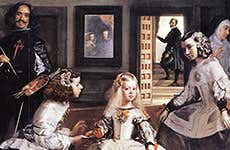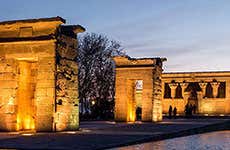
Plaza de Cibeles
Plaza de Cibeles is a square in Madrid’s city center at the intersection of the Paseo del Prado and Calle Alcalá, and has become one of the most emblematic symbols of Spain’s capital city.
The square is dominated by a magnificent fountain and flanked by impressive and iconic buildings dating from the end of the eighteenth up to the twentieth century.
Cibeles Fountain
The fountain of Cybele was designed by the architect Ventura Rodríguez in 1782. It represents Cybele, the Greek goddess who is depicted sitting on a lion-drawn carriage. In the beginning, the fountain supplied water to the citizens of Madrid and in 1895, it was moved to the centre of Plaza de Cibeles and became a decorative element.
As well as being one of Madrid’s most iconic symbols, the Cibeles Fountain has for many years been the location where Real Madrid, the renowned football club based in the capital, celebrates its victories. It is also where the National Spanish football and basketball teams celebrate their triumphs.
Famous buildings
- Palacio de Cibeles (Cybele Palace): This striking building is one of Madrid’s most emblematic palaces. It was formerly called the Palace of Communication. Completed in 1919, the Palacio de Comunicaciones was used as headquarters of the Spanish postal service, however, since 2007, it has been the seat of the Madrid City Council. The Palace has a rooftop terrace with a bar and restaurant. It has stunning views of Madrid, although less impressive than the Círculo de Bellas Artes.
- Palacio de Buenavista (Buenavista Palace): It was built in 1777 as a residence for the Dukes of Alba. It currently serves as the Headquarters for the Spanish Army.
- Banco de España (Bank of Spain): Opened in 1891, the building serves as the Headquarters of the Bank of Spain. Its impressive façade has little decoration compared to its interior with an excellent art collection, including paintings by Goya, Mengs, Maella and Vicente López.
- Palacio de Linares (Linares Palace): Commissioned by the Marquis de Linares, it was completed in 1900. Years later, it was restored and serves as Casa de América, an institution that seeks to promote the cultural relations between Spain and Latin America. Legend has it that the palace is haunted by the ghosts of the first Marquis de Linares and their daughter, who was supposedly murdered by her parents.
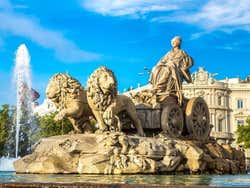
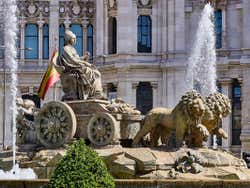
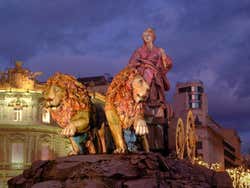
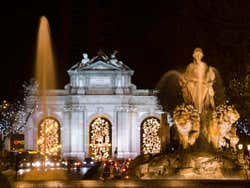
Transport
Metro: Banco de España, line 2.
Bus: lines 1, 2, 9, 10, 15, 20, 34, 51, 52, 53, 74, 146, 202 and 203.
Nearby places
Cibeles Palace (65 m) Naval Museum, Madrid (230 m) Círculo de Bellas Artes (317 m) Puerta de Alcalá (375 m) Thyssen-Bornemisza Museum (376 m)
